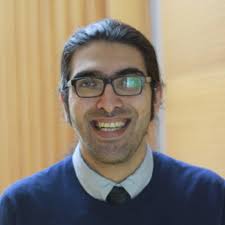
ABSTRACT: This talk covers two different topics about polymeric materials and living marine organisms.
In the first part, we will talk about a class of soft matters called viscoplastic or yield stress materials. Such materials, if not sufficiently stressed, behave like an elastic solid, but once the stress exceeds a critical value (the yield stress), the material deforms like a viscous fluid. We will discuss the effect of the yield stress on spreading droplets. We use experiments, asymptotic solutions, and numerical simulations to explain the dynamics and final shape of the droplets. Later, we will show how one can externally control the shape of a spreading droplet using temperature. For that, we will first present the rheological properties of a thermo-responsive material that undergoes sol (Newtonian)-gel (yield stress) transition upon heating.
Then, we show the final diameter of a thermo-responsive droplet can be controlled by simply changing the surface temperature. In the same part, we introduce an experimental method based on optical coherence tomography to identify the solidified region inside a droplet. Eventually, we will briefly discuss the other applications of viscoplastic droplets. In the second part, we will talk about our new study on Dinoflagellate Bioluminescence. Bioluminescence (emission of light from living organisms) is a common form of communication in the ocean. Here we study the bioluminescence on a single-cell level, aiming to understand the response to mechanical stimulation. In our experiments, the cell (a dinoflagellate called P. Lunula) was immobilized via micro-pipette aspiration. We impose pressure on the cell, via a submerged impinging jet. We show that the flow-induced stress on the cell membrane results in a local elastic deformation. As a result, a series of chemical signaling events occur that eventually yields to light production in sub-cellular compartments. Besides experiments, we propose a counterpart model based on linear ODEs that includes the viscoelasticity of the membrane.
BIOSKETCH: Maziyar Jalaal is an applied physicist, currently working as a postdoc at the Department of Applied Mathematics and Theoretical Physics at the University of Cambridge at Ray Goldstein’s Lab. Before, he was a postdoc at Detlef Lohse’s Physics of Fluids group and Max Planck Center for Complex Fluids. He did a Ph.D. in Complex Fluid Lab at the University of British Columbia with Neil Balmforth and Boris Stoeber. His research interests are mostly soft matter, interfaces, and biophysics. He is a former NSERC Vanier Canada Scholar and the winner of Canada CFD Award, Young Scientist Award of the Dutch Fluid Society, and Cambridge Public Engagement Award.
Date/Time:
Date(s) - Nov 18, 2019
2:00 pm - 3:00 pm
Location:
38-138 Engineering IV
420 Westwood Plaza Los Angeles CA 90095
